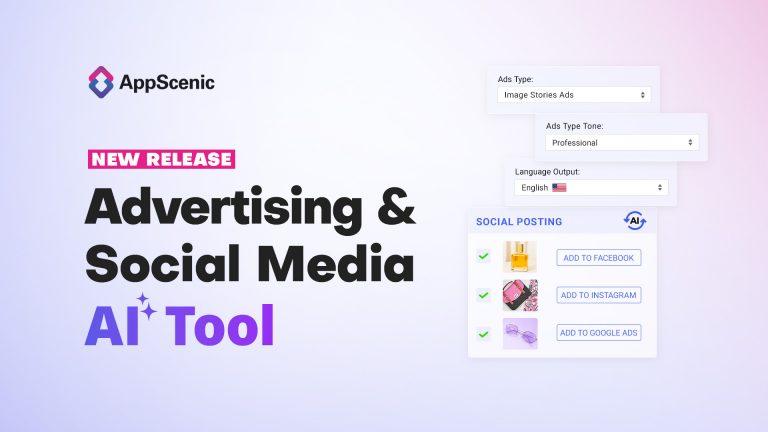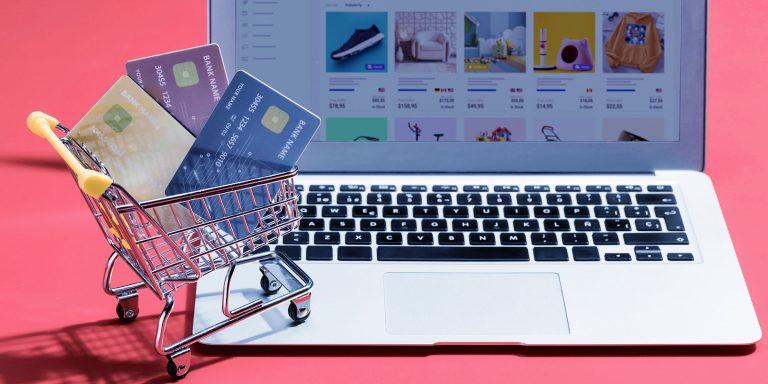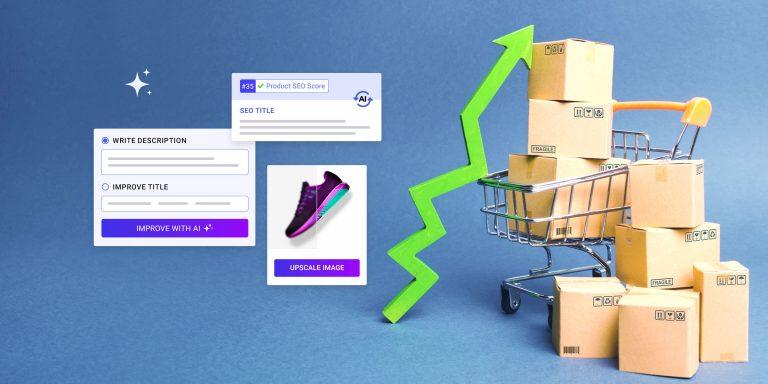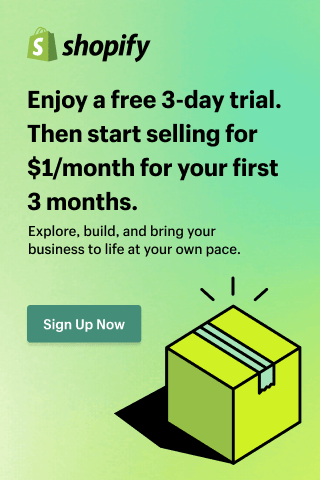The ecommerce landscape is always evolving, and in recent years, one trend has become a game-changer: subscription models. You’ve probably seen them everywhere—from meal kit deliveries to beauty boxes.
These models aren’t just about convenience anymore; they’re reshaping customer expectations and loyalty. And now, dropshipping businesses are jumping on the bandwagon, leveraging subscriptions to create recurring revenue and stronger customer relationships. But why is this model rising so rapidly, and how can dropshipping businesses use it?
Read as we break the why, the how, and the immense potential of subscription-based models in the dropshipping industry.
Table of Contents
Why subscription models are booming
Let’s start with the basics: why the subscription boom?
The answer lies in today’s consumer habits. People value convenience, personalization, and predictability. Subscriptions check all these boxes. From Netflix to monthly snack boxes, consumers have grown accustomed to paying for services and products on a recurring basis.
The numbers back this up in a big way. By 2028, online subscriptions are projected to reach an astounding $2.3 trillion in market value. This explosive growth highlights the increasing shift toward subscription-based commerce across various industries, including dropshipping
But it’s not just about convenience. Subscription models work because they:
- Build predictable revenue: Unlike traditional ecommerce, subscriptions create a steady income stream, allowing businesses to forecast revenue more accurately. For dropshippers, this means less guesswork and more stability.
- Boost customer retention: Instead of relying on one-off purchases, businesses keep customers engaged over the long term. For dropshipping stores, this can reduce the constant need to chase new customers.
- Encourage brand loyalty: A good subscription experience can transform casual buyers into loyal advocates. It’s not just about products; it’s about becoming part of a lifestyle.
- Enhance personalization: Subscriptions often involve curated or customized offerings, making customers feel seen and valued.
In short, the subscription model is all about creating deeper relationships and sustained engagement. And dropshipping is perfect for taking this on.
How subscription models work in dropshipping
Dropshipping businesses traditionally focus on transactional sales, but subscriptions open up a whole new dimension. Here are some ways you can use subscriptions in your online store:
- Recurring deliveries: If you sell products that customers use regularly, such as skincare, supplements, or pet supplies, you can get your customers to subscribe to receive these items monthly or quarterly.
- Curated boxes: You can put together themed boxes (e.g., “Winter Essentials” or “Self-Care Kits”) from your supplier’s catalog. These curated packages feel like a gift every time they arrive.
- Access-based subscriptions: Instead of delivering physical products, your dropshipping store can offer digital or exclusive benefits. For example, subscribers might gain access to members-only discounts or premium content on your store.
- Flexible plans: You can also make it easy for your customers to customize their subscriptions. This could include choosing products to add to the gift boxes, when to have products delivered, or even giving them the freedom to skip a month.
The dropshipping advantage here is clear: since you don’t handle inventory, you can pivot quickly and experiment with different subscription offerings without significant overhead.
Benefits of subscription models for dropshipping businesses
If you’re still on the fence, let’s break down why subscription models could be the secret ingredient for your dropshipping store.
1. Recurring revenue
Imagine waking up every month knowing you’ll hit your sales goals because your subscribers are already locked in. That’s the magic of recurring revenue. For dropshipping businesses, this creates a buffer against unpredictable sales cycles.
Instead of relying on sporadic sales or fluctuating seasonal demand, a subscription-based dropshipping model ensures consistent income every month. This stability allows you to plan ahead, invest in marketing, improve operations, and scale your business effectively.
For example, a monthly subscription for grooming products or meal kits gives you the assurance of recurring revenue, even during traditionally slow periods.
2. Better inventory planning
Although dropshipping doesn’t require stocking products, subscription models allow you to forecast demand more effectively. Knowing how many subscribers you have allows you to forecast supply needs accurately, reducing the risks of overstocking or understocking.
This level of predictability makes the entire supply chain more efficient, ensuring timely deliveries and satisfied customers.
3. Enhanced customer lifetime value (CLV)
With subscription models, customers aren’t just buyers—they become members of your community. Subscriptions establish an ongoing relationship between your brand and your customers, making it less likely for them to switch to competitors. This repeat engagement fosters brand loyalty and increases customer lifetime value (CLV).
Think of it as turning a one-time customer into a long-term advocate for your brand. By offering exclusive perks, personalized experiences, or early access to new products, you can keep customers engaged and invested in your business.
4. Lower customer acquisition costs
While acquiring new customers can be expensive, subscription models mitigate these costs over time. Once a customer subscribes, the recurring revenue from their subscription offsets the initial cost of acquiring them. Instead of constantly chasing new buyers, you can focus on retaining your existing subscribers, which is both cost-effective and more profitable in the long run.
And satisfied subscribers are more likely to refer your brand to their friends and family, reducing your customer acquisition expenses through organic word-of-mouth marketing.
5. Opportunities for upselling
Subscriptions create an excellent opportunity for upselling and cross-selling. With regular communication and deliveries, you can introduce complementary products or higher-tier plans to your subscribers.
For example, if you’re running a subscription box for skincare products, you can offer premium add-ons like serums or exfoliators that enhance the customer’s experience.
This not only increases average order value (AOV) but also deepens the customer’s connection with your brand by addressing their evolving needs.
Examples of successful subscription models in dropshipping
The Dollar Shave Club effect
This trailblazer in the subscription space revolutionized how men purchase razors. They combined affordable products with quirky branding and a seamless subscription experience. Dropshippers can replicate this by focusing on consumables and branding them uniquely.
Curated wellness kits
Brands in the wellness niche, such as skincare or supplements, often thrive with subscriptions. Think monthly self-care kits with items like aromatherapy oils or herbal teas, sourced via dropshipping suppliers.
Pet subscription boxes
Pet owners love pampering their furry friends. A dropshipping business offering monthly deliveries of toys, treats, and grooming products could tap into a profitable market.

Challenges of implementing subscription models in dropshipping
Of course, it’s not all sunshine and rainbows. Building a subscription-based business comes with its own set of challenges.
1. Managing cancellations
While subscriptions help foster long-term relationships with customers, maintaining these relationships is an ongoing challenge. Customers may cancel subscriptions due to reasons such as perceived lack of value, better alternatives, or financial constraints. High churn rates can offset the benefits of a recurring revenue model.
To combat this, you can focus on delivering personalized offerings, loyalty programs, and regular communication through email or social media. Additionally, analyzing customer feedback and reasons for cancellations can provide insights into areas of improvement.
2. Handling logistics
Subscription models require exact coordination to ensure that products are delivered on time, every time. Managing recurring shipments, especially if you have a large subscriber base, can become logistically complex. Delays or errors in fulfillment can lead to customer dissatisfaction and increased support requests.
Automating order processing and fulfillment through dropshipping platforms or subscription management software can streamline logistics. Partnering with suppliers who have experience handling subscription-based orders can also help reduce the operational burden.
3. Balancing personalization with scalability
One of the key advantages of subscription models is personalization, but offering tailored experiences to a growing customer base can become increasingly complex. Managing individual preferences, customization options, and special requests requires advanced systems and meticulous attention to detail.
Implementing AI-driven tools and CRM platforms can help automate and optimize personalization efforts. These tools can analyze customer data, predict preferences, and generate personalized recommendations, ensuring that each subscriber feels valued without overwhelming your operations.
4. Competing with established brands
More and more businesses adopt subscription models, so you’ll need a unique angle—whether that’s niche products, exceptional service, or unbeatable pricing.
Highlight unique value propositions, such as exclusive products, exceptional customer service, or additional perks. Providing a flexible subscription model—such as the ability to pause or skip deliveries—can also make your service more appealing and reduce cancellations.
How to get started with subscription models in dropshipping
Ready to dive in? Here’s how to make it happen.
Step 1: Choose the right niche
If this is your first dropshipping store, then you should know that not every product can work for a subscription model. Focus on products with recurring demand, strong customer interest, or those that lend themselves to personalization. For example, subscription boxes for fitness enthusiasts or eco-friendly products for sustainable living are currently trending niches.
Research your niche thoroughly to identify what your target customers are willing to subscribe to. Use market research tools, social media polls, and competitor analysis to refine your product selection.
Step 2: Define your subscription model
Once you choose your products, you need to decide on the type of subscription model that aligns with your business goals and customer needs. There are several subscription options to consider:
- Replenishment subscription: Ideal for consumable products like skincare, pet food, or office supplies. Customers receive a regular supply of products at set intervals, ensuring convenience and continuity.
- Curation subscription: Popular for lifestyle and niche products like fashion, beauty, or gourmet food. Customers receive curated boxes with themed or personalized items, offering an element of surprise.
- Access subscription: Provides exclusive access to premium content, early product launches, or special discounts. This model works well for businesses aiming to build a loyal community.
Evaluate your product offerings and target audience to determine which subscription type fits best.
Step 3: Invest in subscription tools
Implementing a subscription model requires robust technology to manage recurring payments, inventory, and customer interactions seamlessly. Here’s what you’ll need:
- Subscription management platforms: Platforms like Shopify offer apps specifically designed for subscription services, such as Shopify Subscriptions or Subi.
- Ecommerce platform integration: Ensure your subscription app integrates with your ecommerce platform (e.g., Shopify, WooCommerce) for a smooth user experience.
- Inventory and supplier tools: Use tools to synchronize inventory with suppliers, ensuring that recurring orders are fulfilled without delays or stockouts.
Choose technology that scales with your business and supports customization to cater to unique customer needs.
Step 4: Partner with reliable suppliers
Efficient logistics are critical for delivering consistent and timely subscription services. Ensure your fulfillment process is streamlined by:
- Partnering with reliable suppliers: Your suppliers are your backbone. Ensure they can handle recurring orders, maintain product quality, and meet delivery deadlines. Read more about how to find reliable suppliers in this extensive guide.
- Automating order processing: Use automation tools like AppScenic to manage recurring orders, reducing the risk of human error.
- Tracking shipments: Provide customers with tracking information to keep them informed about their delivery status.
Choosing the right suppliers translates into efficient logistics and will build trust, making sure customers receive their subscriptions as expected.
Step 5: Focus on marketing
Effective marketing is essential for attracting subscribers and building momentum for your subscription model. Focus on these key areas:
- Content marketing: Create blog posts, videos, or social media content that highlights the benefits of subscribing, such as convenience, exclusivity, or savings. Here are a few content marketing tips for dropshipping.
- Influencer partnerships: Collaborate with influencers in your niche to promote your subscription offerings and showcase their unboxing experiences.
- Referral programs: Encourage word-of-mouth marketing by rewarding existing subscribers for referring friends and family. Read more about referral programs in this article.
- Email campaigns: Use targeted email campaigns to nurture leads and remind potential customers of the value your subscription provides.
A strong marketing strategy should emphasize the unique aspects of your subscription model and why it’s worth committing to.
The future of subscription models in dropshipping
As consumer behavior continues to evolve, subscription models will likely play an even bigger role in ecommerce. Advancements in technology, such as AI and personalization tools, will make it easier to deliver hyper-relevant experiences to your subscribers.
Additionally, with dropshipping suppliers becoming more sophisticated, offering reliable fulfillment for recurring orders will become less of a hurdle.
So, what’s stopping you?











